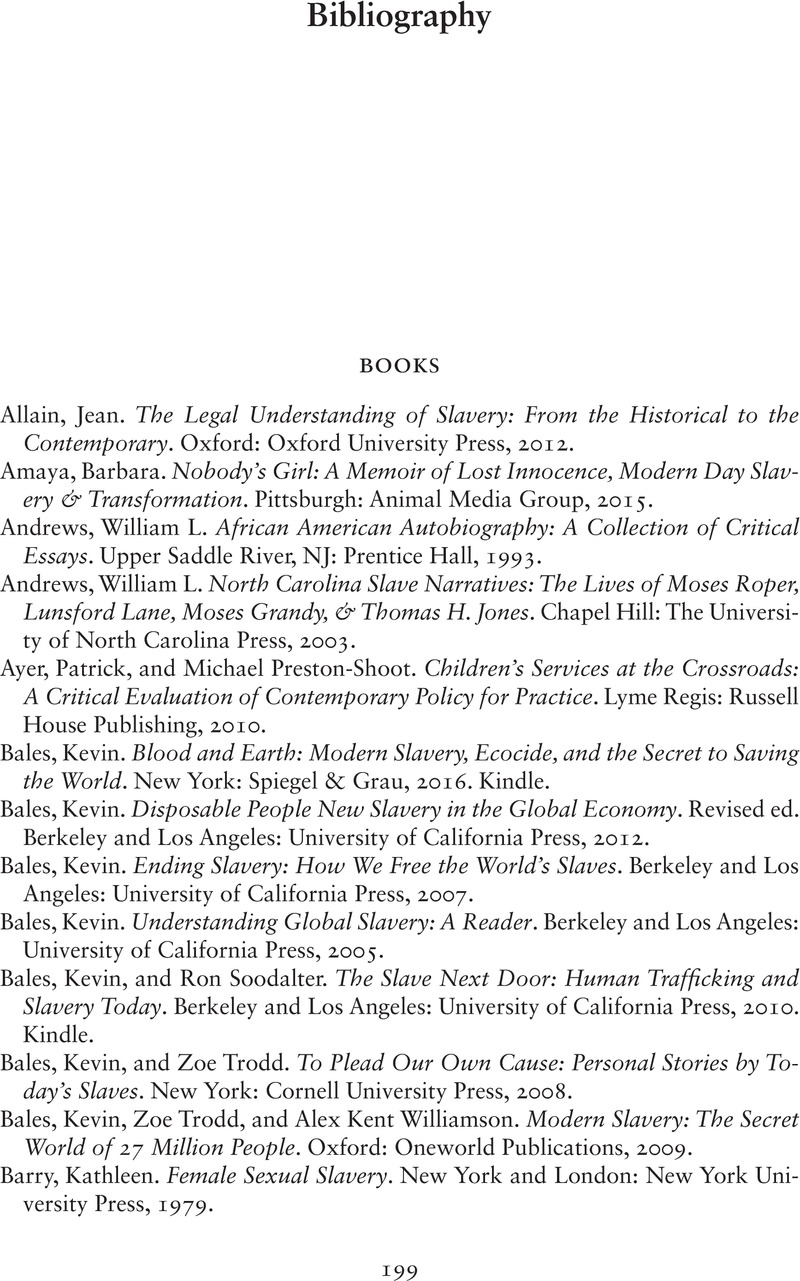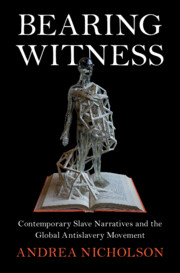Book contents
- Bearing Witness
- Slaveries since Emancipation
- Bearing Witness
- Copyright page
- Epigraph
- Contents
- Figures
- Preface
- Acknowledgments
- Introduction
- 1 A Narrated Self
- 2 “I Was Free, I Still Wasn’t Free”
- 3 The Construction and Reconstruction of Survivor Identities
- 4 Bearing Witness
- 5 Assuming “Full” Freedom
- 6 Antislavery Strategies and the Survivor as Activist
- Conclusion
- Appendix: Table of Narratives analyzed
- Bibliography
- Index
- References
Bibliography
Published online by Cambridge University Press: 22 September 2022
- Bearing Witness
- Slaveries since Emancipation
- Bearing Witness
- Copyright page
- Epigraph
- Contents
- Figures
- Preface
- Acknowledgments
- Introduction
- 1 A Narrated Self
- 2 “I Was Free, I Still Wasn’t Free”
- 3 The Construction and Reconstruction of Survivor Identities
- 4 Bearing Witness
- 5 Assuming “Full” Freedom
- 6 Antislavery Strategies and the Survivor as Activist
- Conclusion
- Appendix: Table of Narratives analyzed
- Bibliography
- Index
- References
Summary

- Type
- Chapter
- Information
- Bearing WitnessContemporary Slave Narratives and the Global Antislavery Movement, pp. 199 - 224Publisher: Cambridge University PressPrint publication year: 2022



